Homepage → Gardening Related Topics → The Florida Weave Method of Trellising Tomato Plants
The Florida Weave Method of Trellising Tomato Plants
Planted June 10, 2004
Last tended to on October 15, 2024
Reading time: 3 minutes
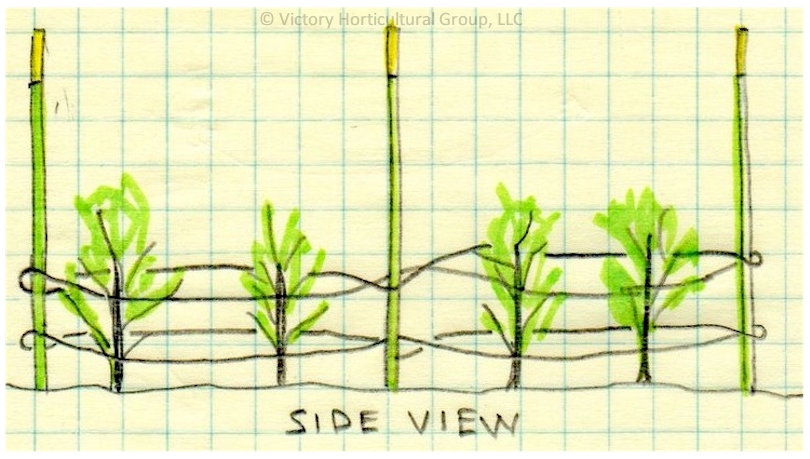
by Mike Dunton
There are many methods that you can employ for keeping your tomato plants off of the ground. Along with the method described on this page, we also use tomato baskets here on the farm. You can review the basket information by clicking here.
How you choose to support your tomato crop is not important. The main factor is that you keep them erect. By doing so, their contact with the soil is minimized and air is allowed to circulate around them. This helps reduce disease and promote even ripening.
The Florida Weave method is very simple and the only supplies required are some form of posts and string. We personally use steel fence “t-posts” and sisal binder twine. The only reason that we chose these two materials is that we started out with a lot of t-posts that were left over as a result of ripping out pasture fences. Whatever posts you already have or can obtain cheaply will be fine.
We source our binder twine wherever we can find it at the best price. Local farm supply stores are one option; online is another. Keep in mind that you will be going back and forth down your rows, multiple times throughout the season, so take that into consideration when calculating the number of feet that you will need.
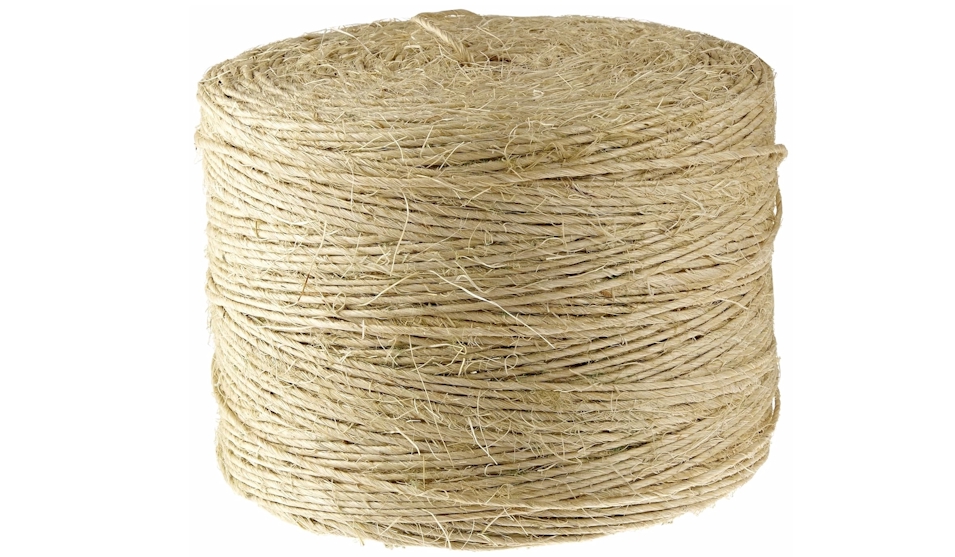 If you click on the image above, you will be directed to various options at Amazon. The material that we use is natural sisal fiber, untreated, and biodegradable.
If you click on the image above, you will be directed to various options at Amazon. The material that we use is natural sisal fiber, untreated, and biodegradable.
The installation process is easy. After laying out the rows in your garden and planting your plants, a post is pounded into the ground at the end of each row. Posts are also placed between every two plants. As in the picture below, if you have an odd number of plants, you can stretch your spacing to three plants between each post.
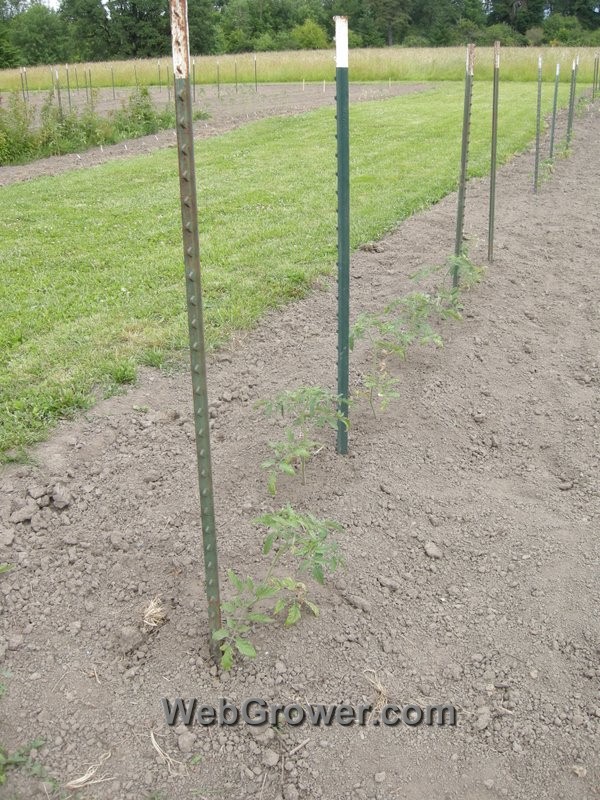
Starting in line at the base of the plants, tie off the spool of twine to the first end post. Pull the twine down the row, weaving behind the plants, then in front of the second post, then behind the next section of plants, then in front of the next post, etc.
The following sketches are a little bit crude, but hopefully they will help you better understand my instructions:

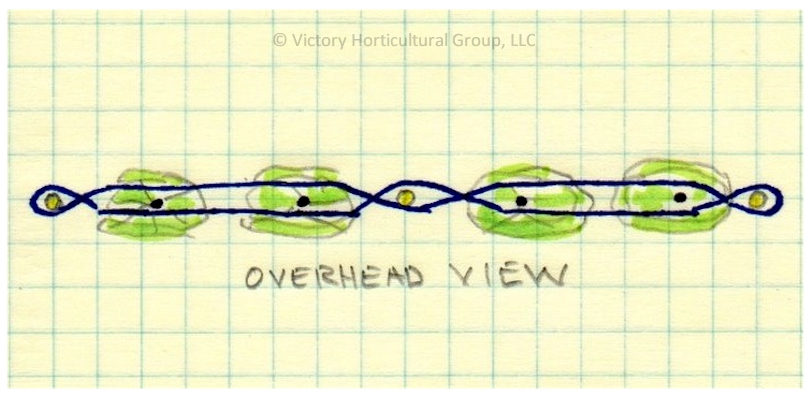
When you reach the end of the row, pull the twine tight, loop around the post a couple of times, and return at the same level, this time reversing the path you initially took. When you reach your original starting point, pull taught, tie off the line, and cut. If the plants are tall enough, go ahead and make another run, a little higher up on the plants.
You will continue this process throughout the growing season as needed. Yes, it takes a little bit of time, but the results are worth it. The following photograph shows plants fairly early in the season. Notice that we mulch with straw or grass clippings. This also helps to reduce disease infections from soil-borne pathogens and acts as mulch to help retain soil moisture.
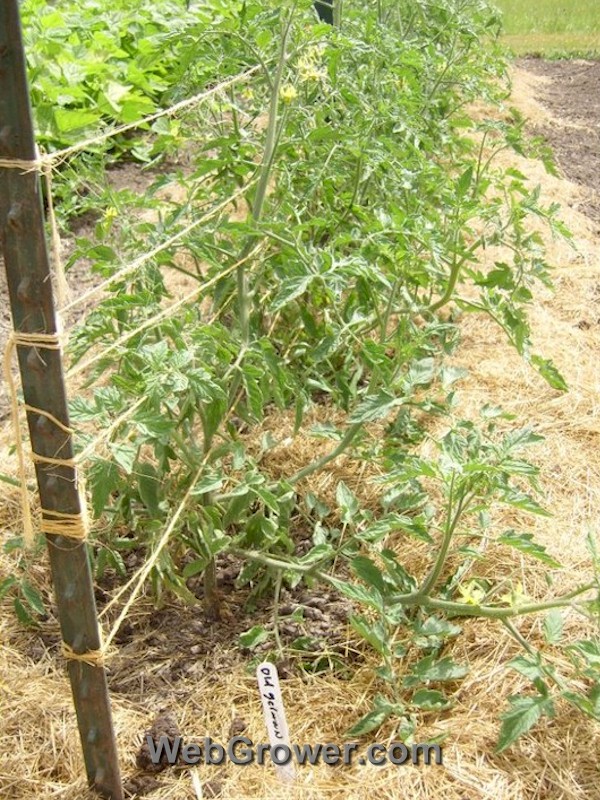
I hope that you found this page useful. It is intended as an informational resource and advice based on our experience. It should be used as a guideline and tailored to your own personal gardening adventure.
Mike Dunton is an "heirloom seed pioneer" who founded, and is the former owner of, the Victory Seed Company. As a seed professional, biodiversity preservationist, horticultural historian, technologist, farmer, gardener, homesteader, writer, and educator, he has worked for decades to share the knowledge and experience that he has gained over a lifetime of trial and error. He strives to pass down his passion for incorporating old-timey skills into our everyday, modern lives.
Copyright © 1998 - 2024 - All rights reserved
WebGrower.com℠ is a service mark of Victory Horticultural Group, LLC.
• Privacy Statement •
This site participates in the Amazon Services LLC Associates Program, an affiliate advertising program designed to provide a means for sites to earn advertising fees by advertising and linking to amazon.com.